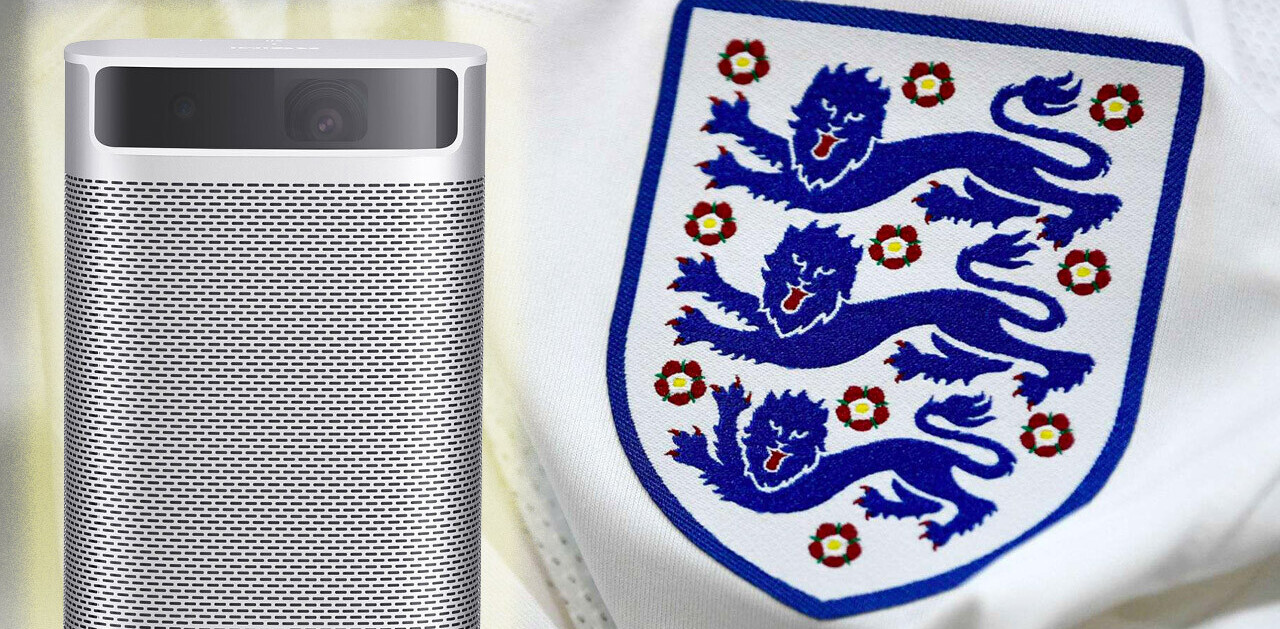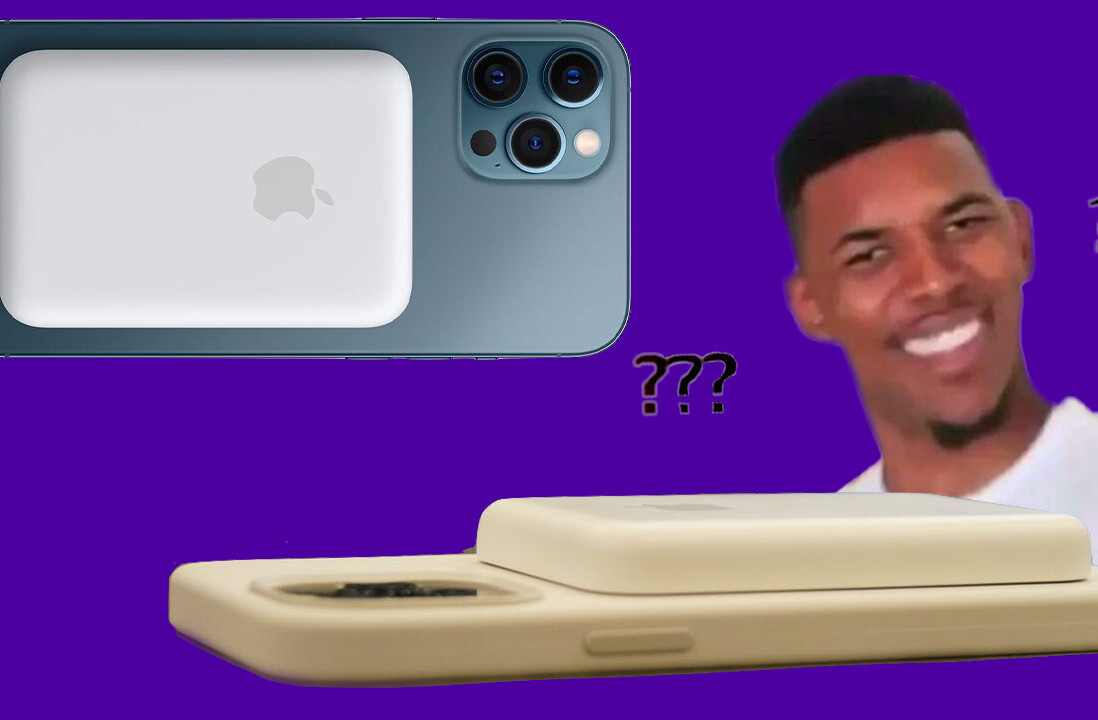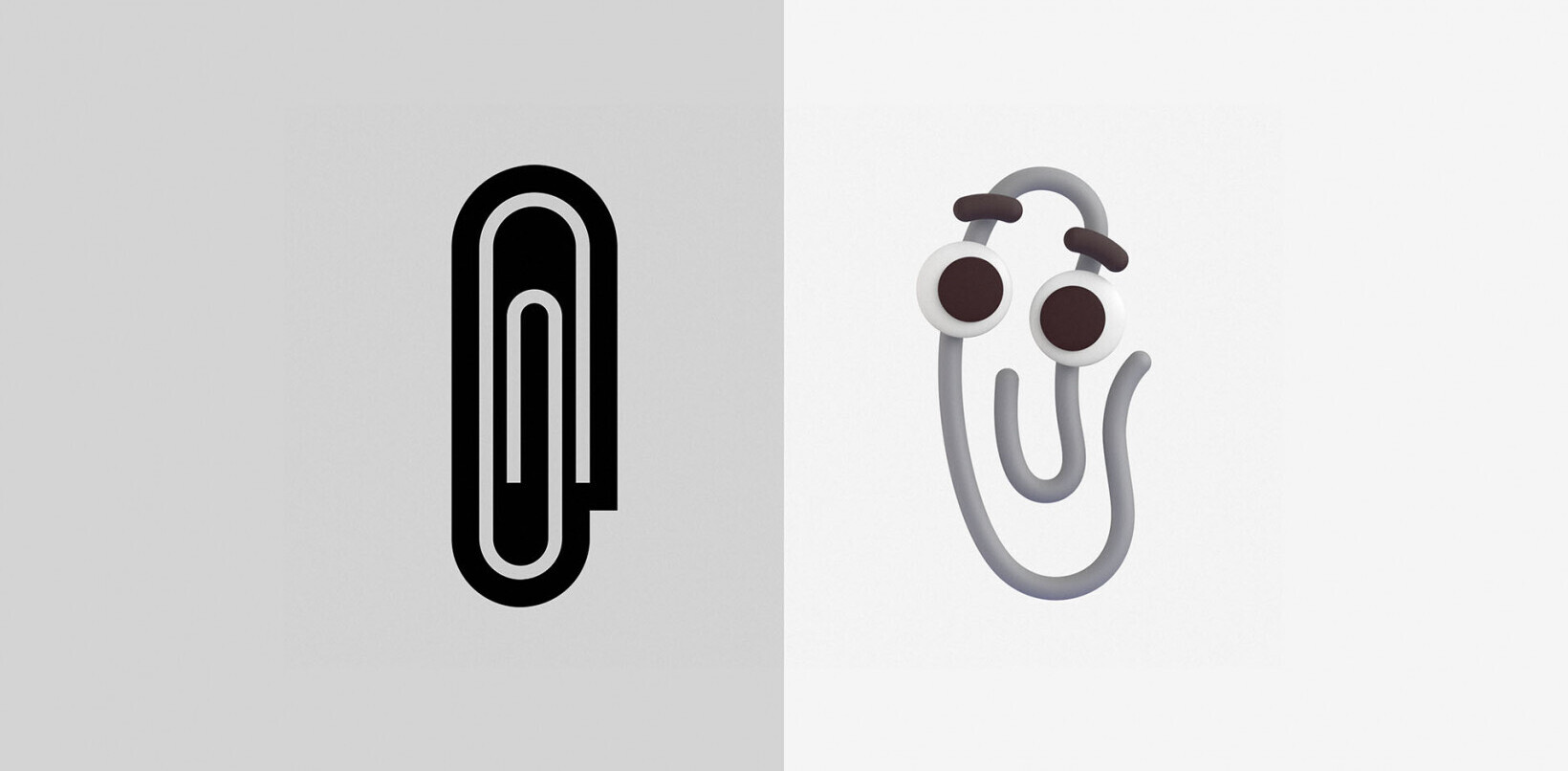I’m a photographer and take hundreds of photos per month, but rarely print them except for my clients. It’s just too much of a hassle.
That’s where digital picture frames come in handy, but they generally are too low resolution, too small, or of too poor quality to be worth comparing with high quality prints.

Enter the Memento Smart Frame. It’s a 25 or 35-inch, quasi-4K panel with with Wi-Fi connectivity, and I’ve had the chance to test the larger variant for a few weeks. It’s an excellent option if you’re looking for a high quality option for framing your digital images on a large screen.
Specs and key details
- 3230 x 2160 resolution
- Wi-Fi connectivity
- Storage for ‘up to 3000 pictures’
- Available in 35-inch and 25-inch screen sizes
- 50,000 hours lifespan – or 8 to 10 years
- 23 watts power consumption (18-45 watts, depending on brightness)
- Available in black, silver, dark brown, auburn and walnut wood frames
- $899 for the 35-inch size, $599 for the 25-inch.
Setting it up
The 35-inch frame I reviewed is about 29 pounds, so you can’t just hang a nail in your wall and call it a day. Thankfully Memento was smart enough to include its own mounting mechanism so you don’t have to worry about finding the right screws, drilling into a stud or irreparably damaging your wall and $400 frame when it all comes crashing down.
The mounting mechanism uses four self-drilling wall anchors, so no tools are required other than a regular Phillips screwdriver. I hung it up in less than ten minutes, and it sits completely flush against my wall.
There’s also an optional flat white power cable – a clever solution to the usual ugliness of the power cable in digital displays like this. The cable is only a millimeter or two thick, and can be painted over to match your wall. It’s a more involved set up, but likely worth the time if you want to make the Memento a centerpiece item. I didn’t set it up, as I could easily hide the power cable in my apartment.
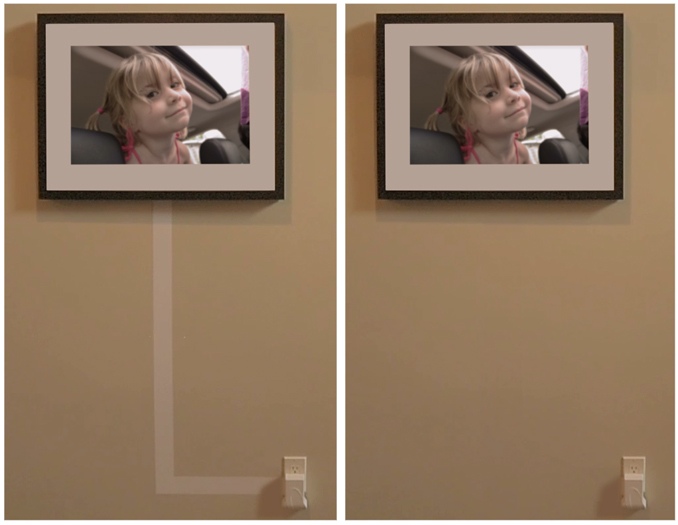
Connecting it with my Wi-Fi network through the Memento app also didn’t take more than a few minutes. The app ( availablefor Android, iOS, or Windows PCs) is fairly barebones, but lets you directly load photos onto your frame without the need of an external card or USB drive, which is useful if you want to update photos often. You can also control some aspects of image quality, such as brightness, contrast, and saturation.
Excellent image quality (most of the time)
On the matter of image quality, when you are looking at it head on with good environmental light, it really does almost look like print. The only problem is that the illusion degrades slightly under less favorable conditions, so how good the frame is will depend on where you choose to set it up (more on this later)
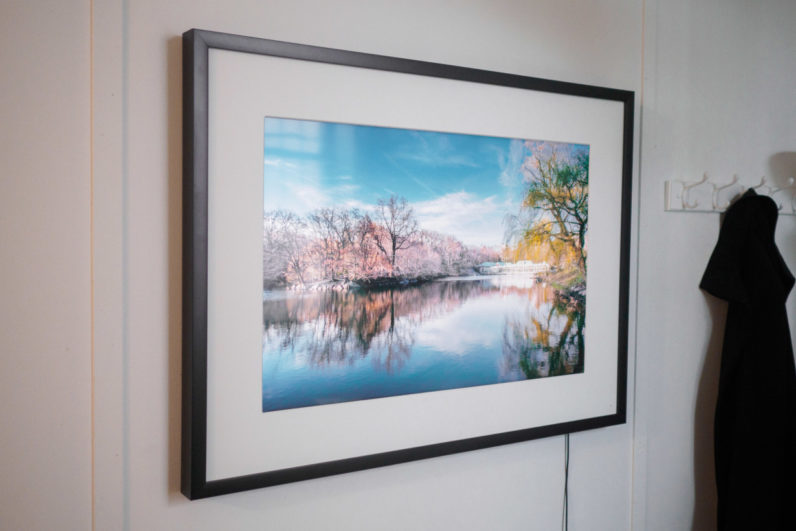
When standing not far from the center of the frame, contrast is excellent, colors are vibrant, and the semi-gloss finish strikes a good balance for imitating print. As implied before it’s not quite 4K, because the 3:2 aspect ratio crops off some horizontal pixels, but it should be more than sharp enough for even fairly close up viewing – especially with the 25-inch screen.
The screen has a brightness sensor to dim the screen according to your environment, and it generally works pretty well. It will also shut off the frame at night when the lights turn off. I just wish the dimming process were a bit smoother – you can often tell when the screen is dimming as it generally happens in discrete steps rather than a gradual transition.
Overall, it’s become a point of conversation in my apartment in the way smaller digital frames never did because, well, they were small. I have had a few people confuse the frame for print, which is about the biggest compliment one could give a digital display.
Qualms
My main qualm is with viewing angles. They’re good by the usual standards for digital displays, where you normally are looking at things head on, but the drop off in color and saturation is more noticeable with a frame that’s meant to imitate or replace print images, and which you might not place in an optimal location.
That’s what happened in my small NYC apartment. I had to place the frame off to the side of my small living room. My apartment’s floor plan basically means I’m often looking at the frame from a 100-degree angle or so, which doesn’t nearly show the display at its best.
The other giveaway of its LCD nature is the fixed color temperature. While print will reflect the light of the surrounding room, an LCD just shines out its own light, some times making whites look blue-er than the warm light of sunset or my lightbulbs. That’s accentuated by the fact that the Memento uses a thick white border around the actual display portion.
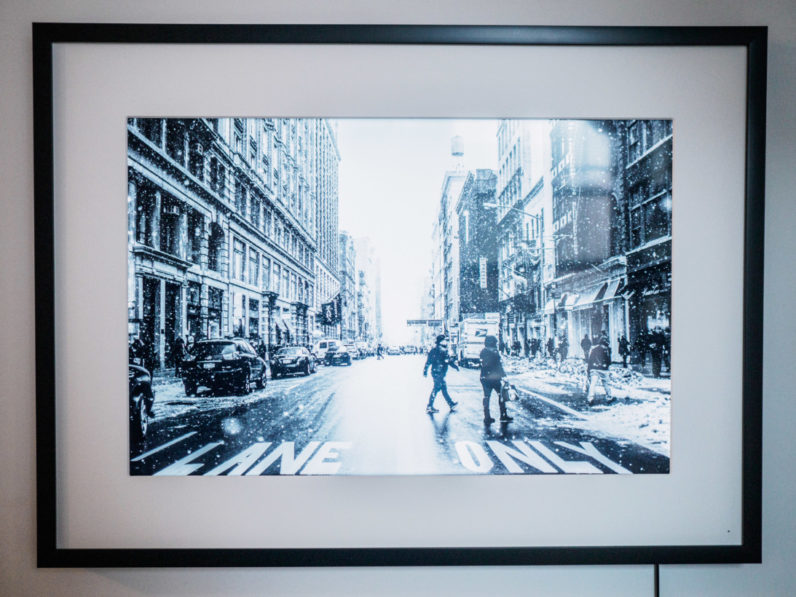
Apple worked around this problem to an extent with a white balance sensor on the 9.7-inch iPad Pro, warming or cooling colors to match ambient light. It would be nice to see a similar feature in more digital photo frames, whose sole job is to display images realistically; it’s just particularly noticeable on the Memento due to its huge size.
Finally, even though you can adjust settings in app, it would be nice if you could turn off the screen through a button on the frame itself. The Memento directly faces my TV, and though the automatic brightness works well, it could still sometimes be a little distracting during dark scenes.
Worth the money?
Those caveats aren’t worth discounting the Memento though; they just means you should be a bit wise about your placement if you want to help it look like like print.
If want to use the frame as a centerpiece – which by all means, you should, – just make sure it’s somewhere that gets a lot of sunlight for the most natural image. Else, it would help to install a spotlight facing the frame with a relatively color temperature (about 4000k or above).
Of course, at its price price, you could just get a 4K TV and hand it up on the wall – but it likely wouldn’t look as realistic, would waste more energy, wouldn’t sit as flush against a wall, and be a greater mess of cables.
You might not confuse it for a printed photo, but the Memento Smart Frame is a good facsimile – and a lot more convenient. At $599 or $899 it’s pricey, but I’d say it’s a worthwhile investment if you’re the kind to print your photos often – or you just wish you did.
Get the TNW newsletter
Get the most important tech news in your inbox each week.
